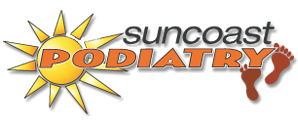
Pain relief, particularly when pain is chronic (>3 months duration) e.g. heel pain, shin splints, stress fractures
- Tendon injuries, particularly Achilles and Patellar tendinopathy by stimulating the healing process
- Myofascial release of tightened muscles. Tight calf muscles are a factor in many lower limb and foot problems. Release of the these muscles often results in significant reductions in pain
How does Acupuncture work?
- Local effects – Stimulates nerve fibres in area needles inserted, improving blood
supply & promoting healing - Segmental Analgesia – Insertion of needles stimulates the local nerve all the way up to its specific segment at the spinal cord & has an analgesic (pain relieving) effect in any bone or soft tissue that is supplied by that segment of the spinal cord. This is the main effect of Acupuncture
- Extrasegmental Analgesia – Nerve impulses stimulated by needles travel to the spinal cord and then to the brainstem. The brainstem has the ability to suppress pain throughout the whole body
- Central regulatory effects – Nerve impulses from Acupuncture needles also go to a part
of the brain called the Cerebral Cortex where the sensation of needling is registered. This in turn stimulates deeper structures in the brain, the Limbic system and Hypothalamus, where mood and emotion are regulated. Acupuncture can therefore have a calming effect and improve a patient’s sense of wellbeing. - Myofascial Trigger Points – When muscles are injured or work in a less than ideal position (i.e. shortened due to tightness in a muscle group), painful knots can develop called trigger points. These taut bands of sensitised muscles may refer pain to other nearby areas. Insertion of needles deactivates trigger points and promotes self healing of the body.
